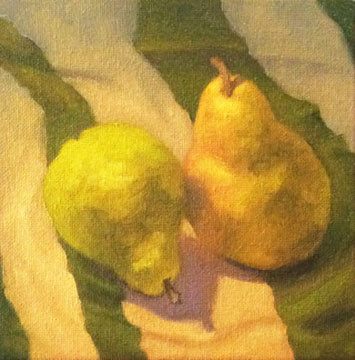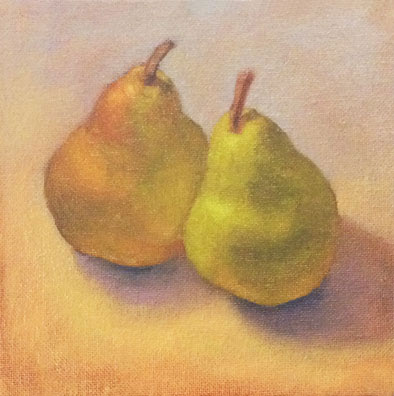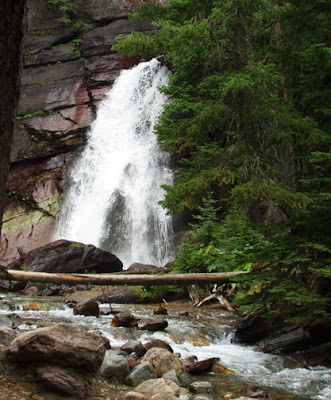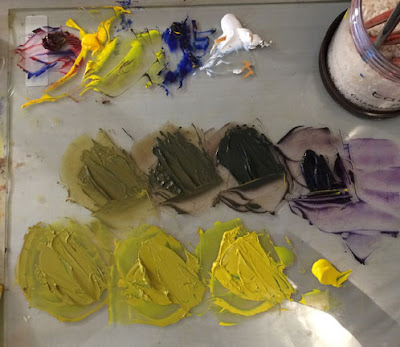 | |||
| Stock Market Ted Davies, 1959 Woodcut with gold leaf |
With the Thanksgiving holiday and family obligations, I haven't had much time to paint lately, so thought I'd share some images from Breaking Ground: Printmaking in the US 1940-1960, an exhibit I saw at the Philadelphia Museum of Art last summer.
This first piece is a woodblock print by Ted Davies (1928-1993). I don't have the exact dimensions of the print, but it was a good 3 ft. wide. What appears to be tan ink in the photos of this piece is actually gold leaf.
 |
| Stock Market detail from lower right hand corner |
The details in the piece really blew me away. Each person is unique and doing their own thing. Look at the swags on the window drapes in the detail below.
 |
| Stock Market detail from upper left hand corner |
Next up is The Hydrogen Man by Leonard Baskin (1922-2000).
 | |
| The Hydrogen Man Leonard Baskin, 1954 Woodcut |
According to the label for this piece at the Philadelphia Museum of Art, "...Baskin made this life-sized print in response to the US testing of the Castle Bravo hydrogen bomb on Bikini Atoll in the Marshall Islands." It's a pretty powerful image, gruesome yet captivating. My photo doesn't do it justice and doesn't convey the size of the piece.
 |
| Detail from The Hydrogen Man |
The intricate maze of veins must've taken a lot of patience and a very steady hand to carve out of wood.
 |
| Monoprint Harry Bertoia, c. 1942-43 Color relief monoprint |
I really liked this monoprint by designer and artist Harry Bertoia. Unfortunately the label for the piece didn't offer any information about it. A quick google-search didn't produce any further insight into this particular piece, but the website for the Harry Bertoia Foundation talks about how in 1943 Mr. Bertoia sent around 100 monoprints to the curator Hilla Rebay at the Guggenheim (then known as the Museum of Non-Objective Art) for a critique. Much to his surprise, she wanted to buy the entire collection for the museum! I can see why.
I took photos of twelve of the pieces in this show, but no matter how hard I tried, many of them ended up with harsh reflections in the glass from the gallery lighting, so they aren't worth showing here. It was really quite an inspirational show, and we caught it just a week before it closed. Of course the Philadelphia Museum of Art regularly has special exhibits of famous artists and artwork, but they also have these smaller shows of works on paper which gives the visitor who is willing to explore the museum a little deeper a real treat with the added bonus of not needing an extra ticket or having to try to view artwork in a crowd. Truth be told, they are my favorite exhibits.
















































